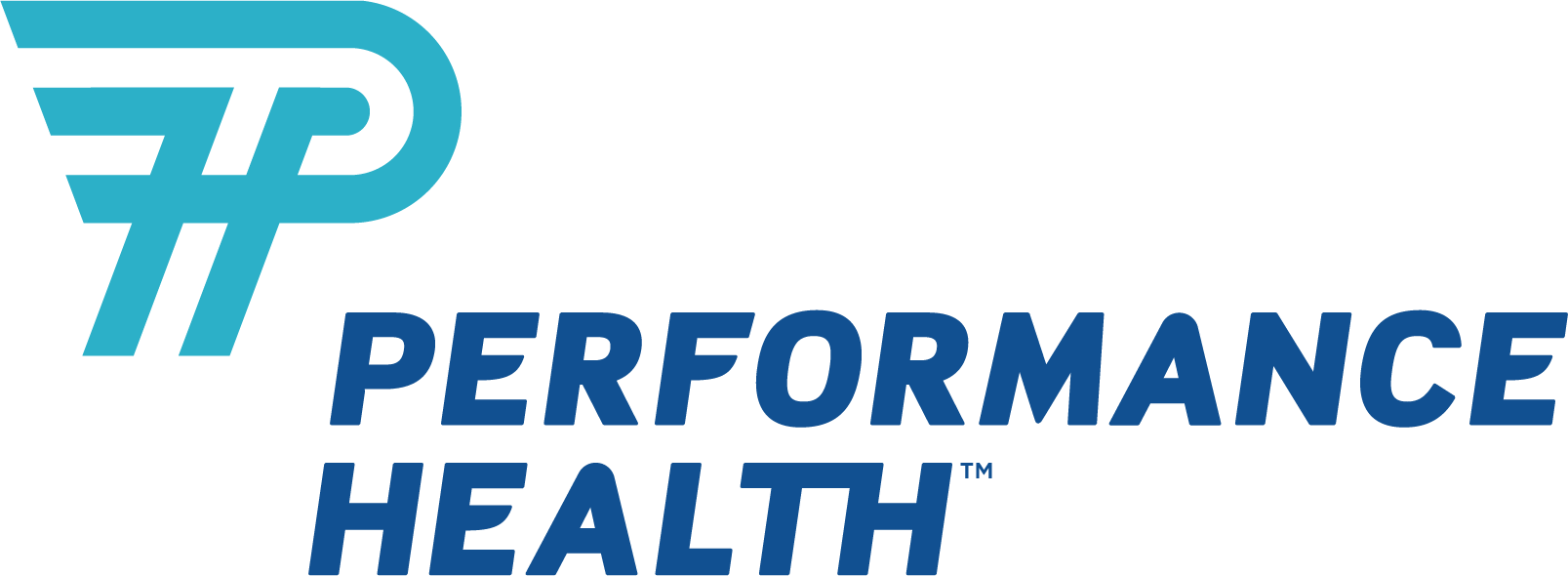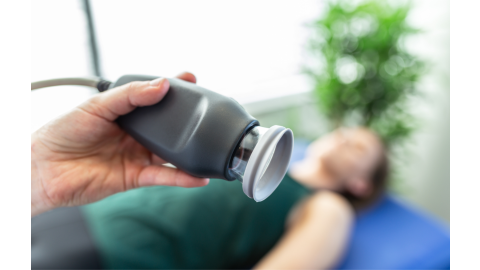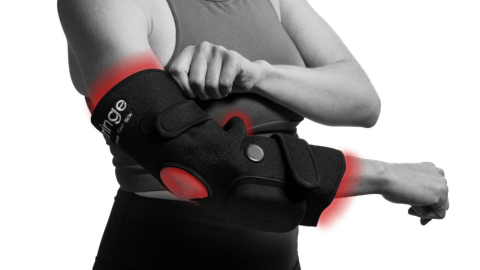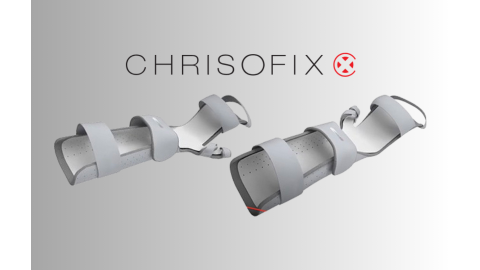As Huntington’s disease progresses, you will develop muscle and joint contractures, abnormal shortening of muscles that restrict joint movement. To prevent contractures, active range of motion exercises are recommended daily to focus on straightening the joints.
The exercises help move arm and leg joints through their full range of motion and can be performed whether you are lying down or while seated in a supportive chair. By the middle and late stages of HD, active movements are often limited to very small ranges of motion. A caregiver will then need to manually help you move through the full joint range of motion.
We’ve come up with 8 helpful exercises that promote safety, increase balance, and improve range of motion for people with Huntington’s.
- What is Huntington’s Disease?
- Active Range of Motion Exercises to Help Manage HD Contractures
- Managing Contractures Using an Orthosis
- Balancing Exercises to Prevent Contractures
- More Information
What is Huntington’s Disease?
Huntington’s disease (HD) is a genetic disorder that causes the progressive breakdown of nerve cells in the brain. The disease’s symptoms include: forgetfulness, impaired judgement, unsteady gait & involuntary movements (chorea), slurred speech, difficulty in swallowing, insomnia, fatigue, and slow eye movement. Over time, the disease affects the individual’s ability to reason, walk and speak.
Active Range of Motion Exercises to Help Manage HD Contractures
Lower Extremity Exercises
Hip and Knee Flexion
- Lie down, flat on your back, and cradle the leg by placing one hand under the bent knee
- With the other hand, grasp the heel for stabilization
- Lift the knee and bend it toward the chest, with the kneecap pointed toward the ceiling. Do not allow the hip to twist during this movement
- The leg is then lowered to the starting position. The foot should stay in a straight line with the hip and not swing in or out
Hip Rotation
- Lie down, flat on your back, and place one hand on the thigh and the other hand just below the knee
- Bend the knee halfway to the chest so that there is a 90 degree angle at the hip and the knee
- Pull the foot toward you and then gently push it away. Do not go beyond the point of resistance or pain
- Lower the leg to return to the starting position
Lumbar Rotation
- Lie down, flat on your back, with the knees bent
- Keeping them together, lower them to one side as far as they comfortably go
- Bring the knees to the middle and slowly repeat on the other side
Hamstring Stretch
- Lie down, flat on your back, on a comfortable surface
- Using a resistance band under the heel, slowly raise the leg up, keeping the knee straight
- Hold for 30 seconds, then slowly lower the leg to return to starting position
Upper Extremity Exercises
Elbow Flexion and Extension
- Standing in upright position, hold the upper arm with one hand and forearm with the other hand
- Bend the arm at the elbow so that the hand touches the shoulder. Then straighten the arm all the way out
Shoulder Flexion and Extension
- Standing in an upright position, hold the wrist with one hand. With the other hand, grasp the elbow joint to stabilize it
- Turn the palm inward, facing the body, and keep the elbow relatively straight
- Move the arm from the side of the body over the head
Finger and Wrist Flexion and Extension
- Standing in an upright position, hold the forearm above the wrist with one hand and grasp the fingers with your other hand
- Holding the hand in this way, bend the wrist back, about 90 degrees, while straightening the fingers out
- Then bend the wrist the opposite direction, about 90 degrees, while curling the fingers into a fist
Neck Rotation
- Standing in an upright position, tilt the head slowly toward left shoulder and then toward the right shoulder, touching the ear to the shoulder if possible
Managing Contractures Using an Orthosis

In addition to AROM exercises, people with HD can also use static and dynamic orthotics for the hands, wrists, elbows, knees, and fingers. Comfy Splints are soft and comfortable to wear, made from high quality dri-release terrycloth to wick away moisture and prevent skin breakdown. The splints are padded to aid in the management of flexion contractures and are ideal for gradual extension of non-fixed wrist, hand, finger flexion.
Resting comfort splints support weak or deformed hands with a reinforced spine that can bend and adjust as needed. The splint is appropriate for neuromuscular deformities, or flaccid, weak or spastic hand conditions. Offered in a variety of sizes, learn more about our wide range of comfy orthotics!
Balancing Exercises to Prevent Contractures
Early in HD, people with Huntington’s disease will experience difficulty balancing if the feet are close together or while standing on one foot. In the middle stages, excessive trunk movements can also increase the risk of falls.
To improve balance, stand in front of a counter with your feet together and try to balance without holding on to the counter. If you are able to do this exercise, add slow movements such as head turns, arm movements up and down, or closing the eyes while holding the same position.
These exercises can be further progressed by repeating the same exercises while you stand on a soft surface such as a foam pad or while standing on one leg. Below we’ve included some additional balancing exercises that might be helpful!

Seated Marches Using an Exercise Ball
Step 1: Sit on the ball with the spine straight and abs tight
Step 2: Take the hands behind the head for a greater challenge or keep them on the ball and lift the right foot a few inches off the ground
Step 3: Lower the foot and lift the left foot a few inches off the ground
Step 4: Continue, alternating lifting the right foot and then the left. As you get comfortable with the movement, lift the knees higher and march faster
Step 5: Repeat for 1-2 minutes
Front Step Ups Using an Aerobic Step Board
Step 1: Slowly step onto the board with the right foot
Step 2: Slowly step up with the left foot
Step 3: Hold for 10 seconds and in an upright position
Step 4: Slowly step down backward with the right foot
Step 5: Slowly step down with the left foot
Step 6: Repeat for 1-2 minutes
Side Step Using an Aerobic Step Board
Step 1: Start facing sideways and step up sideways with the right foot
Step 2: Step up with the left foot and step off the other side of the board with the right foot
Step 3: Step down with the left foot and tap up
Step 4: Step up with the right foot
Step 5: Step up and tap step with the left foot
Step 6: Step down with the left foot and then step down with the right foot
Single Leg Balance with Medicine Ball Toss
Step 1: Start by lifting the right leg into the air and balancing on the left leg with the knee slightly bent
Step 2: Toss the ball back and forth with a partner or bounce it against a wall to yourself, all while maintaining balance
Step 3: Lower the right leg to the ground and now lift the right leg with the knee slightly bent
Step 4: Repeat for 1-2 minutes

More Information
For People with Huntington’s Disease
Learn more about HD in these articles:
- Huntington's Disease Overview: Causes, Symptoms, & More
- The Best Dining Aids for People with Huntington’s Disease
- 8 Bathing & Dressing Aids for Huntington’s Disease
- Huntington’s Disease: Mobility Aids for Every Stage
- Helpful Transfer Aids for People with Huntington’s Disease
- Fall Prevention for People With Huntington’s Disease
For Caregivers
To learn more about how you can help loved ones living with Huntington’s Disease, read the caregiver guide provided by the Huntington’s Disease of Society of America.
References
- Anonymous. (2020). Overview of Huntington’s Disease. Huntington’s Disease of Society of America. Retrieved from https://bit.ly/2WIT3r9
- Anonymous. (n.d.). Exercise/Physical Therapy. Huntington’s Disease Society of America. Retrieved from https://bit.ly/2OOqtk8
- ASL Worldwide. (2004). Range of Motion Exercises. Retrieved from https://bit.ly/3hqO8mJ
Medical Disclaimer: The information provided on this site, including text, graphics, images and other material, are for informational purposes only and are not intended to substitute for professional medical advice, diagnosis or treatment. Always seek the advice of your physician or other healthcare professional with any questions or concerns you may have regarding your condition.








 France
France Australia
Australia





